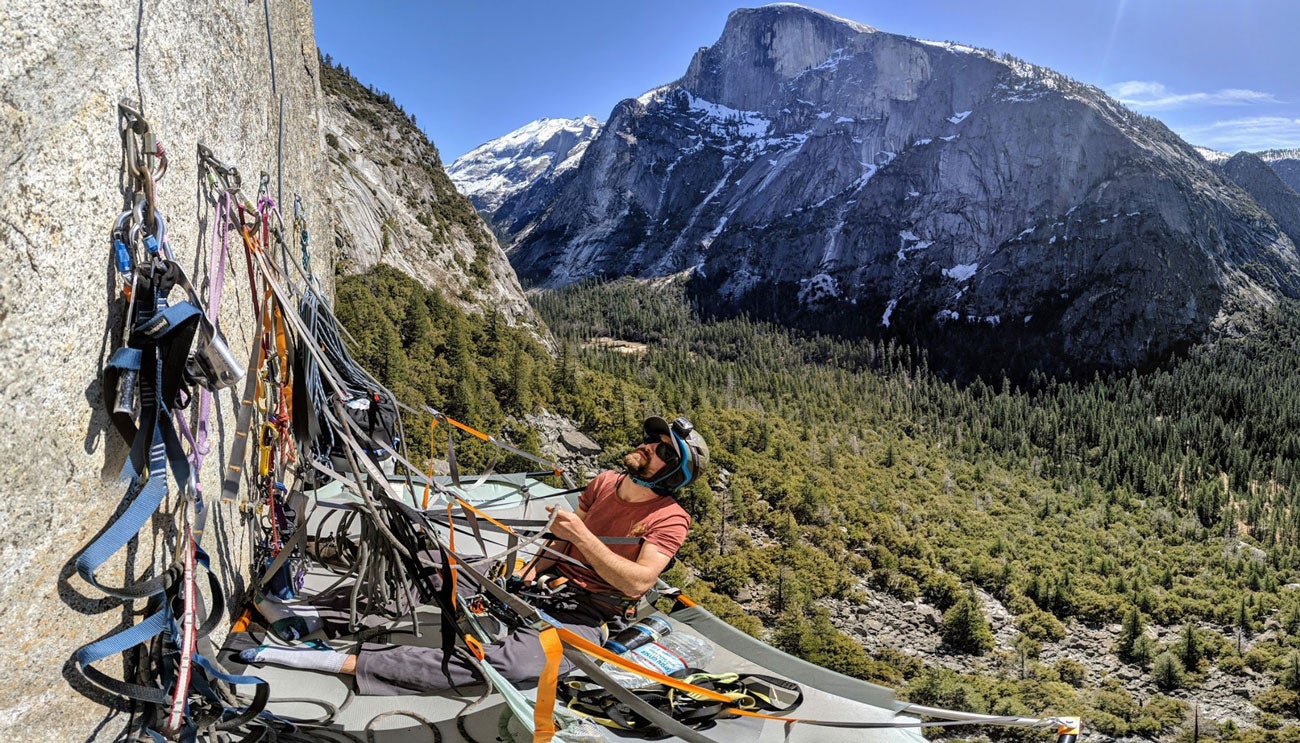
“The only times that I’ve been to the emergency department as a patient – twice – have been as priority one trauma activations,” Dane Larson laughed as he said it.
Larson is a senior nursing student; he’s also an experienced rock climber who spent much of his free time in his twenties exploring Yosemite National Park.
Two years before he began the nursing program at Boise State, he used his climbing gear to ascend a tree in order to trim branches.
“At the time, I had no idea that many people who professionally cut trees get injured,” he said. “Trees are gnarly.”
Thirty-five feet in the air, Larson trimmed a branch – and it promptly sheared off the very limb on which he sat.
He fell.
It was a profound experience, and not because he broke his neck, back and forearm. Rather, as a certified Emergency Medical Technician (EMT) and a veteran provider of emergency care, he realized: “There are some things that I think we just can’t have a perspective on until you’re the patient.”
But that wasn’t his first time receiving emergency medical care.
The ambulance where it all began
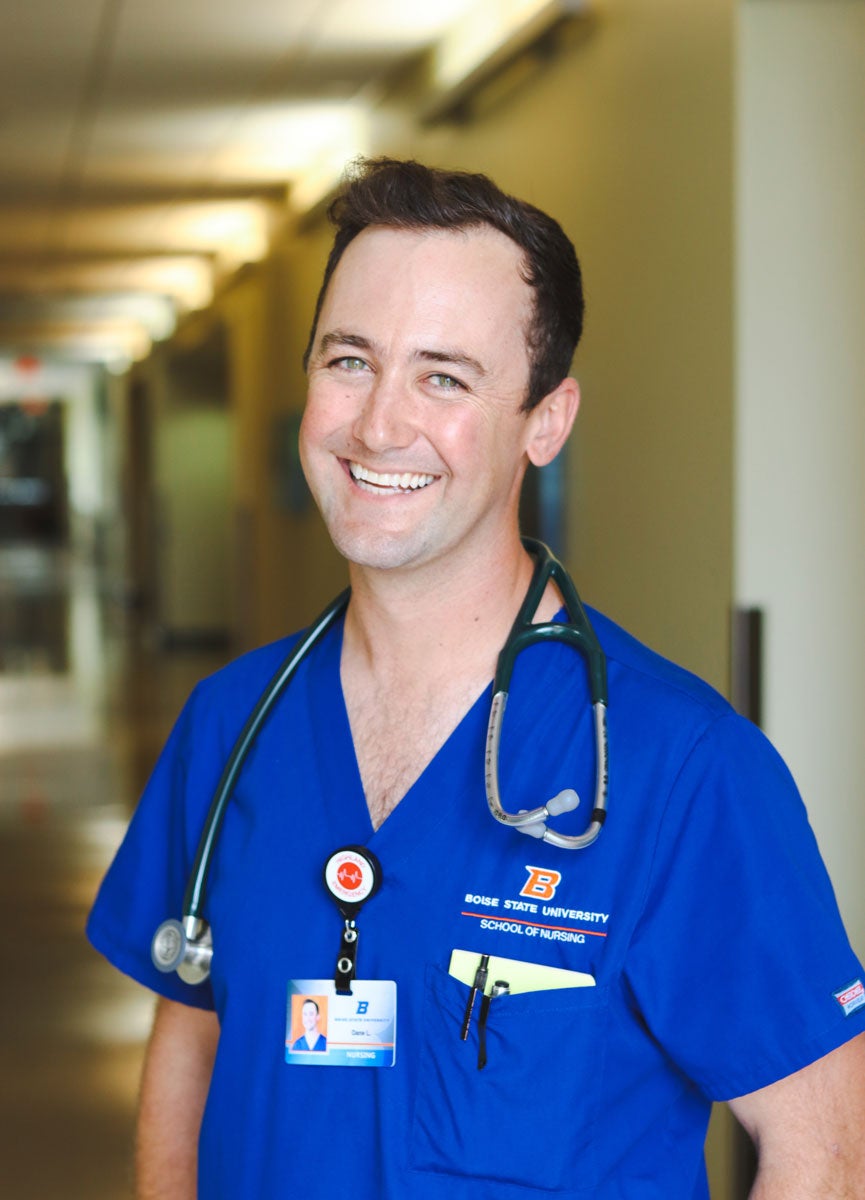
Before his EMT career or education at Boise State, Larson grew up like many normal teenagers: he didn’t know what he wanted to do post-high school, but he felt pressured to figure it out.
Things became abnormal when he found himself in the wrong place at the wrong time. At age 18 he was jumped, suddenly thrust into a nightmare situation in the typically-safe beach town of Santa Barbara.
“It was super random and it was very scary,” Larson said. “I ended up getting stabbed.”
Riding by ambulance to the hospital emergency department, Larson couldn’t help but gawk in awe at the well-oiled machine that is emergency care.
He wasn’t panicky or hysterical; instead, he was fascinated to the point of picturing himself in the career (probably the first indication that it would be a good fit).
So he turned to the technician by his bed – whose face he’ll never forget – and asked, “What do I have to do to be in your position?”
Following her advice, the next semester he signed up for an EMT course.
He thrived.
From the Bay Area to Boise State
After earning his EMT certification, Larson went back to volunteer at the local emergency department with this same technician, who at this point had become a nurse.
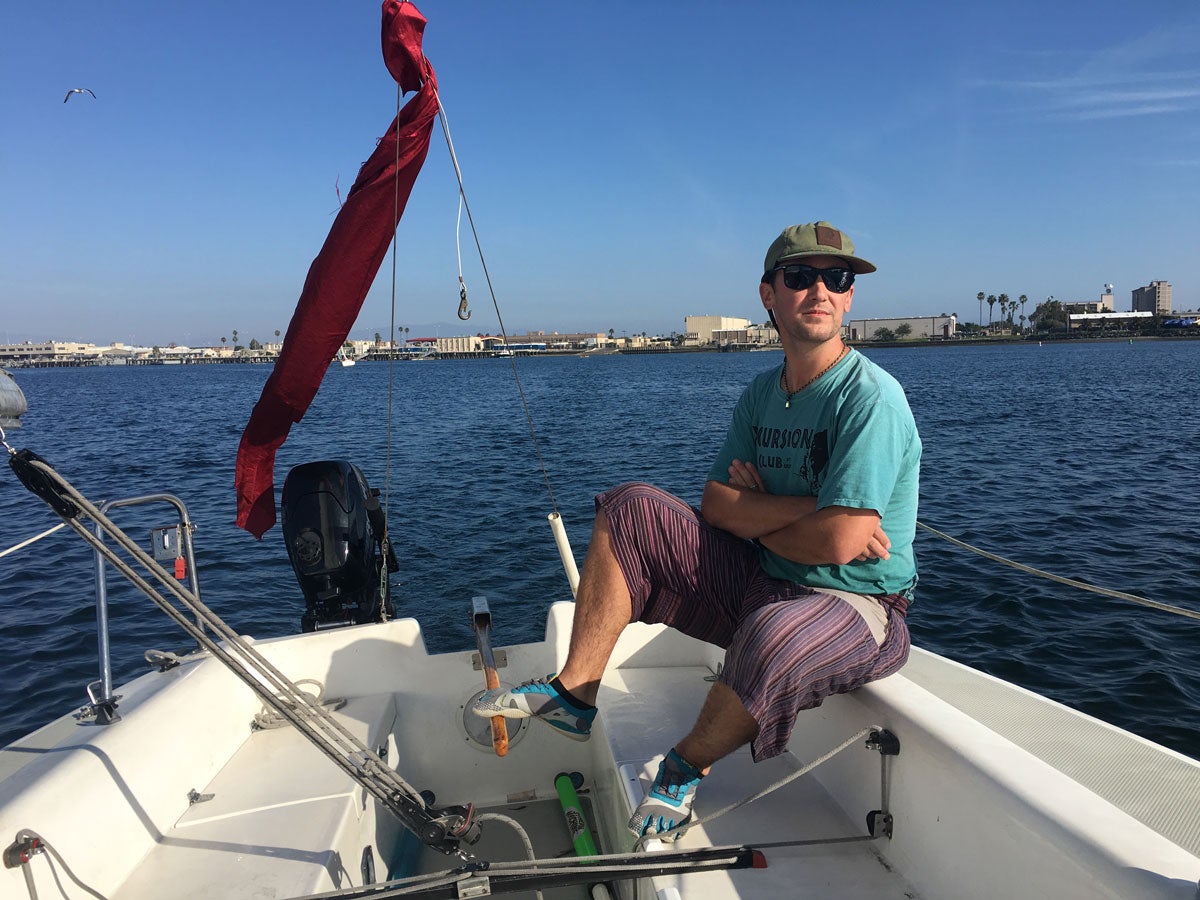
But Larson said he “didn’t really float the idea of becoming a nurse for quite awhile.”
Instead, his journey to Boise State involved a lengthy stint in the San Francisco Bay Area. A fan of both the geography and the weather, he worked jobs that allowed him to roam the region, from retail to a rock climbing guide to ambulance crew.
He found a work-life balance that would let him “work for 48 hours straight,” he said. “Then I would go to Yosemite for like a week and climb.”
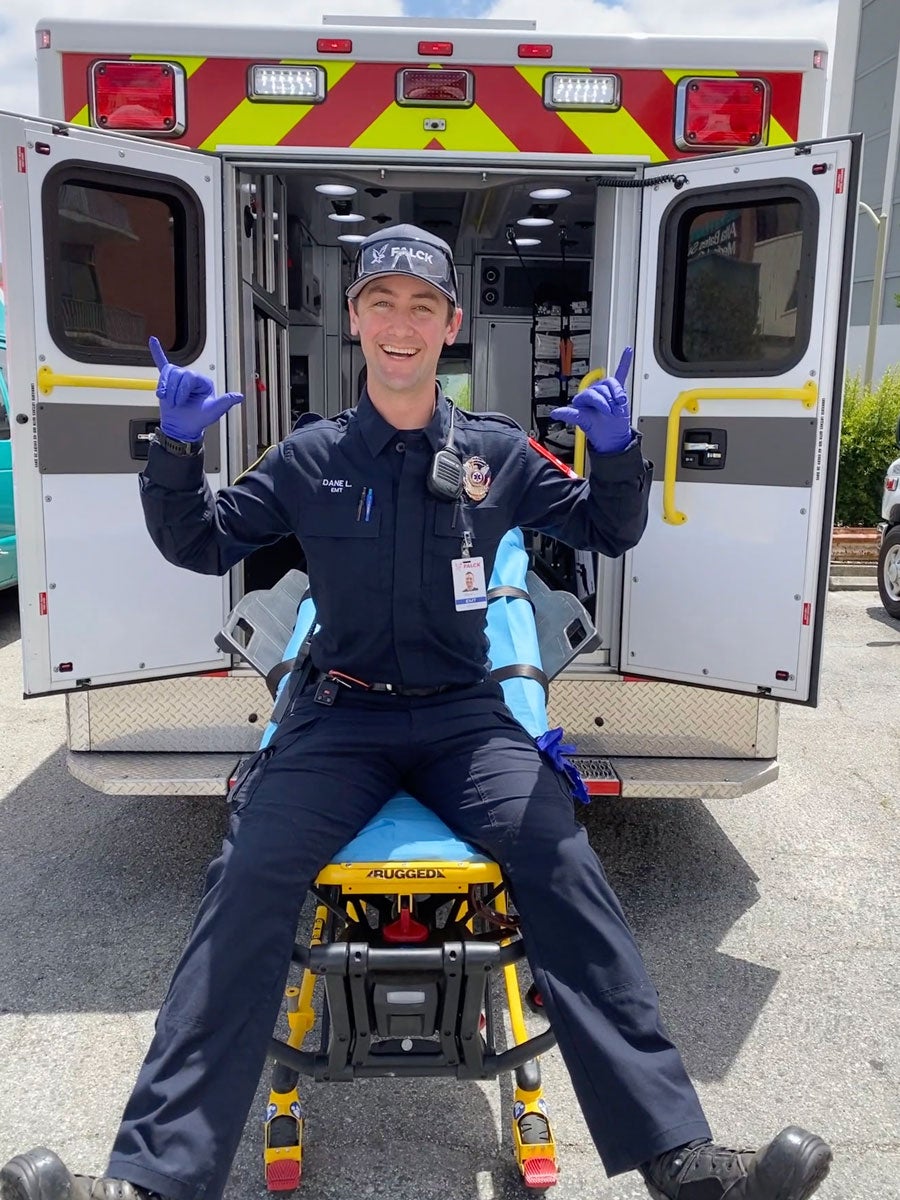
Larson started out with an ambulance company that wasn’t just responding to 911 calls; it also had specialty units that employed EMTs alongside a critical care transport nurse. These units answered calls that required mobile intensive care for adult, pediatric and neonatal patients.
One of Larson’s favorite ambulances to work on paired him with “this really salty, hardcore nurse who used to be a combat medic in Vietnam, and we really connected,” Larson said. “He kind of took me under his wing.”
Larson knew he wanted to further his medical education – either as a paramedic or a nurse – and the more he learned about nursing from colleagues, the more the career flexibility and variety appealed to him.
So he started looking for nursing schools. During the middle of his search in 2019, Larson came through Boise on his way to the airport after visiting some friends in McCall, Idaho.
“It was pretty serendipitous, just coming through town and being like ‘Oh, there’s a program here. I like mountain biking and rock climbing. This is a cool area!’”
Larson laughs as he thinks about it now. “That was before I knew how much they hated Californians here, but you know, that’s just a hilarious bump in the road.”
Protecting a healthy work-life balance
A non-traditional student who started the program during the early pandemic days, Larson vibrantly appreciates the self-care emphasis present at the School of Nursing. His years of EMT experience have given him a front row seat to unhealthy cyclical patterns that plague many healthcare workers.
“Paying attention to our needs is really important because we can’t provide good care if we’re strung out,” he said.
He’s seen providers so dedicated to their jobs that even though they witness traumatic or stressful things at work, they don’t make space in their lives to process them. Many maintain busy schedules – picking up any overtime shifts they’re offered – which inevitably adds more stress that goes unaddressed.
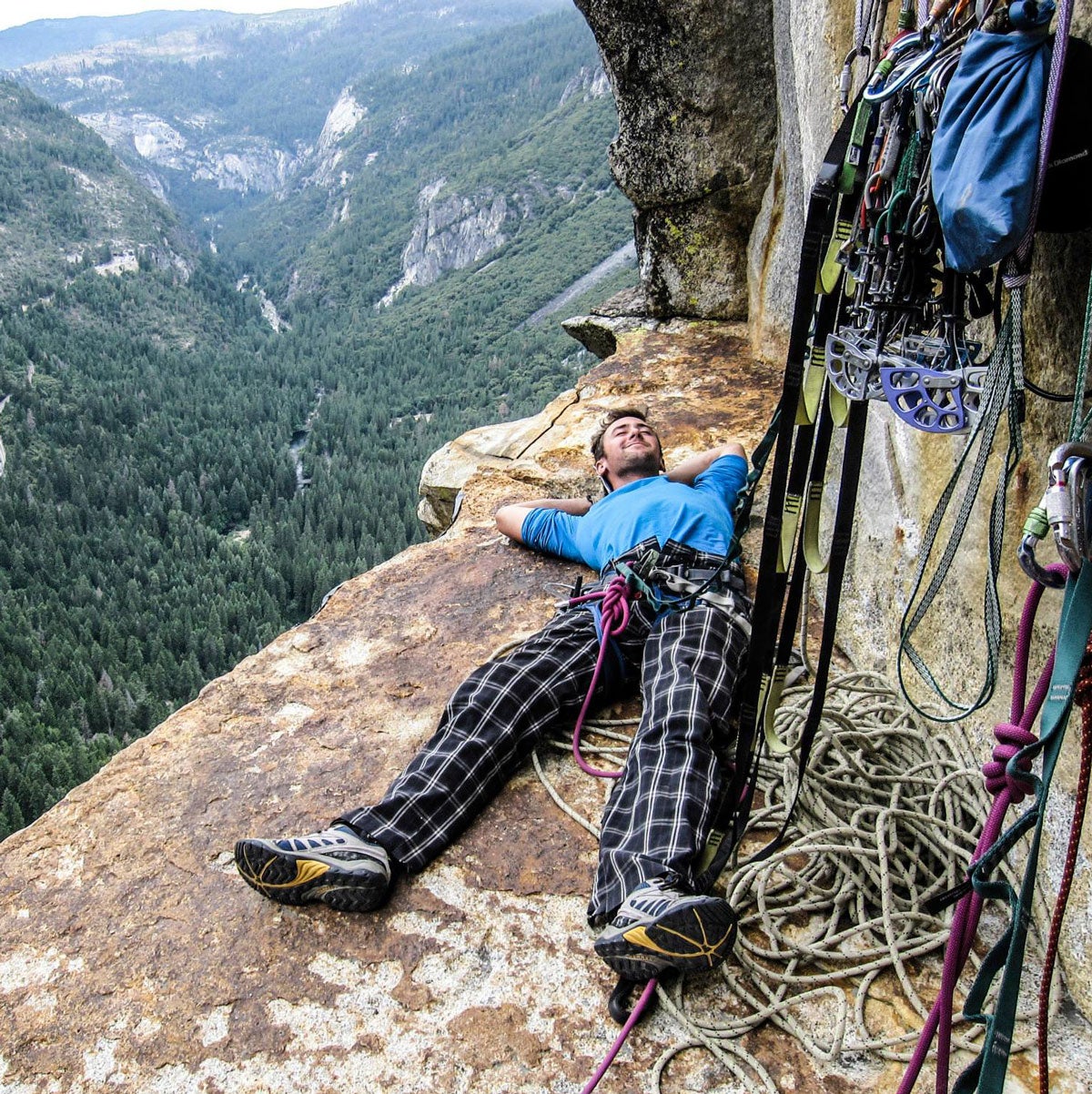
“It’s important to be passionate about what you do,” Larson said. But as dedicated as he is to providing care, Larson firmly believes in prioritizing mental health, even if it means going against societal norms and turning down overtime shifts.
Larson seeks a healthy balance between the intensity of work and self-care activities like rock climbing, biking or skiing.
“Anything in excess is going to have the potential to be problematic,” he said.
In this regard, Larson represents a modern nursing generation that prioritizes emotional health. His career thus far showed him what it took a pandemic for the rest of us to realize: self-care isn’t optional.
New challenges and tangible benefits
The best way Larson can explain his preceptorship this past semester is to liken the clinical experience to when Luke Skywalker travels at warp speed for the first time in “Star Wars: A New Hope.” Larson knew it was going to be intense, but:
“The whole time I was like –” He leaned back in his chair, feigning an intense gravitational pull, “‘Whooooa, there’s so much!’”
Since Larson is used to a “package and ship on” mentality of emergency medical services, caring for patients for an extended period of time proved the most challenging part of his education, especially as he interacted with patients who were not improving.
“We had this patient that was dying, and they were not in a situation that they wanted to be in,” Larson said.
Even as someone who regularly practices self-care, Larson’s clinical experience solidified his belief in its importance, especially when it comes to processing difficult things.
“Even in that setting, I was really gripped,” he said. “And I’ve seen a lot of stuff in my career!”
Like with many other aspects of his life, Larson views end-of-life care with a balance. Even though it was difficult, it was “rewarding to learn about it and know how to navigate certain situations,” he said.
One of the other rewards of the nursing program made itself evident between semesters.
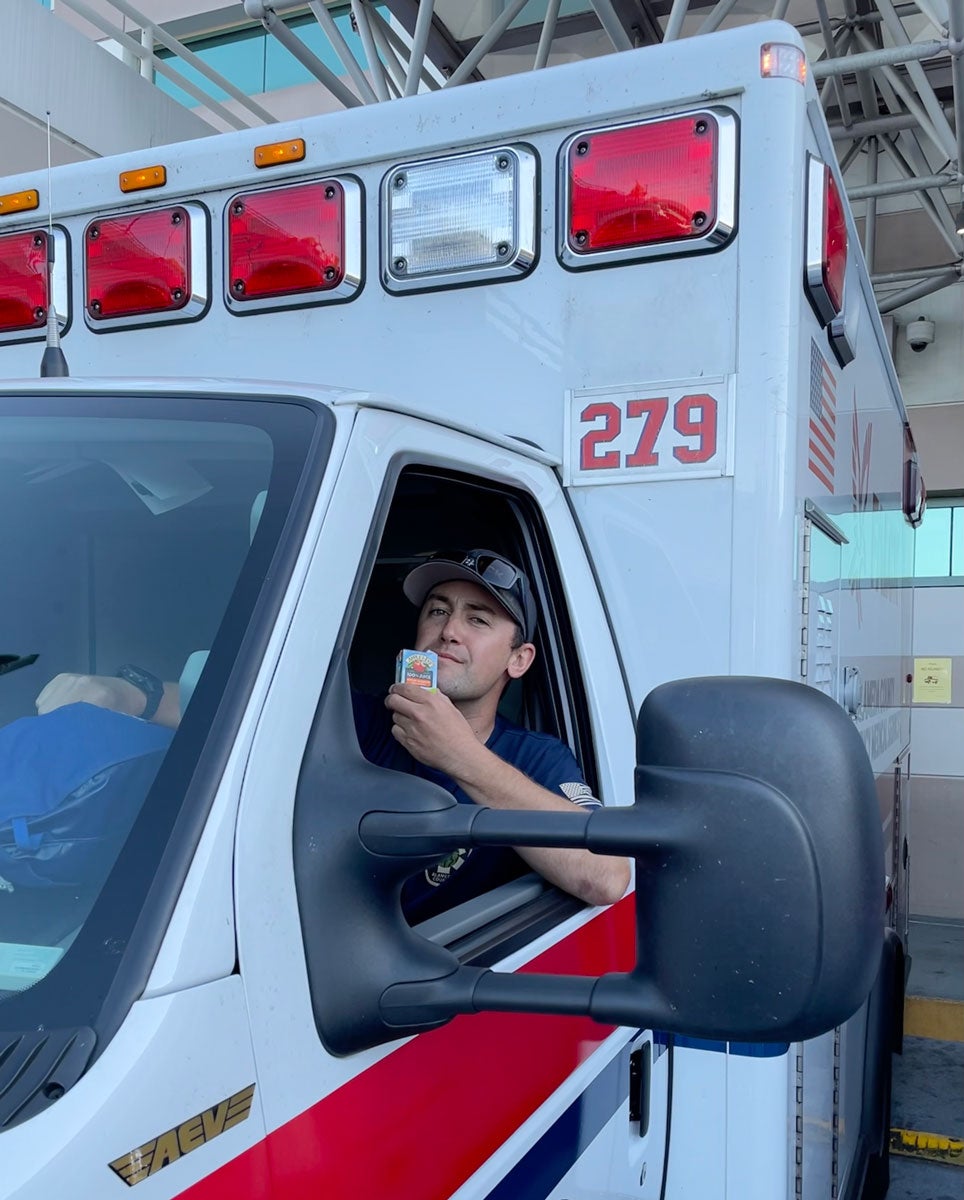
Larson still works part-time for the 911 system in Oakland, California. During summer and winter breaks, he returned to crew the ambulance and found himself in numerous situations where the amount of knowledge he had on a topic was obviously greater than it used to be.
“The progression of learning, with regard to clinical care, has insidiously snuck up on me,” he said. “I was the same person doing the same job, with the same scope of practice as an EMT, but the people that I was working with were like ‘Whoa, I didn’t know that!’”
Their reactions took him by surprise; then the realization of how much he actually knew sunk in. The benefits of continuing his healthcare education became tangible in front of his eyes.
A new level of empathy and understanding
While Larson didn’t have the insight of a decade-long career behind him during his first hospital stay, the five days he spent lying on a gurney after falling from the tree were “very, very informative.”
“I’ll never forget being in and coming out of that experience,” Larson said.
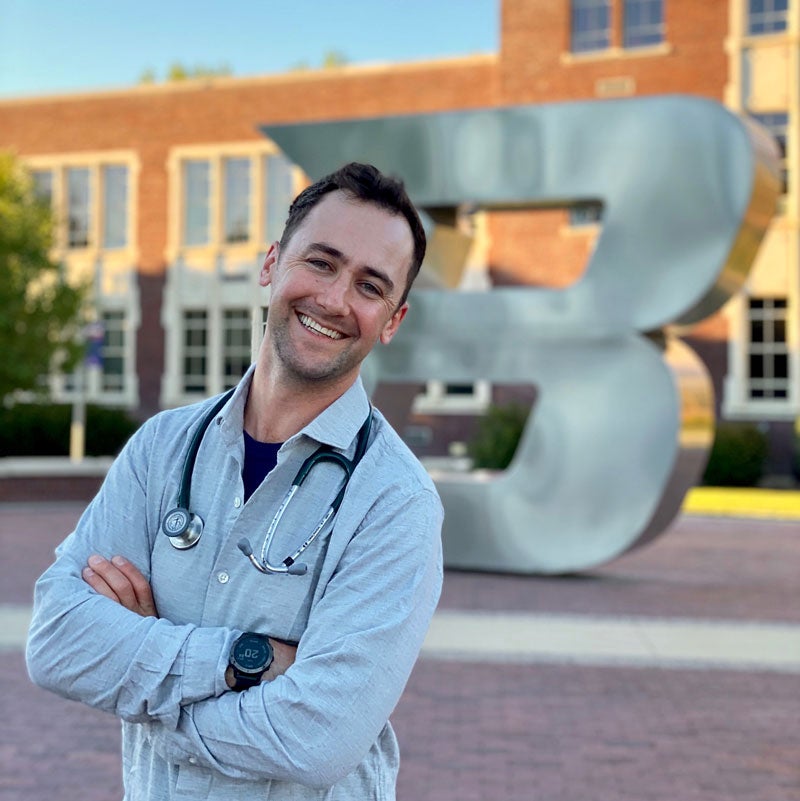
Larson discovered a completely new way to look at his job from a patient’s perspective. Some moments of his hospital stay convicted him: he watched people do things and thought to himself, “That really was not great…I do that all the time.”
But he was encouraged when he witnessed a provider do something positive that is already part of his own practice. He was also inspired to incorporate new tactics into his workflow that he appreciated as a patient.
Larson has a rare perspective of his future duty as a nurse that few can parallel; his experiences as a patient have “one-thousand percent” impacted his practice as a healthcare provider.
After graduation, Larson will bring this outlook into his new role working in the intensive care unit at St. Luke’s Medical Center. Eventually, he hopes to work as a flight and transport nurse in Idaho.
“Would I change my experience in that whole setting?” he asks. “Absolutely not. I’m so glad that I went through all of that because it greatly informed my ability to put myself in the shoes of a patient.”